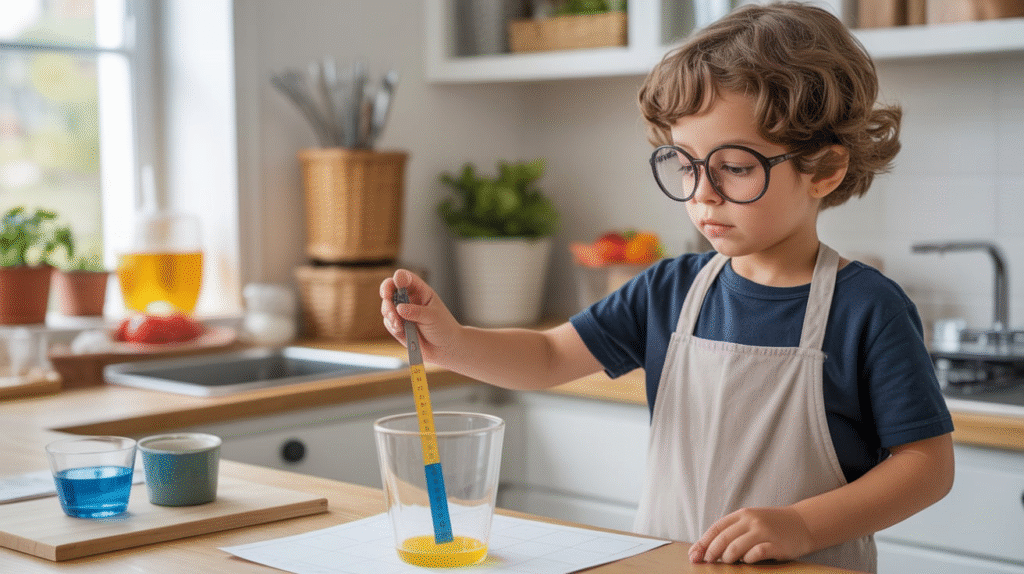Have you ever done a science experiment and wondered how close your results were to the “real” answer? That’s where a percent error calculator comes in! It helps you figure out how accurate your work is by comparing what you got (your measured value) to what you should have gotten (the accepted value).
This tool is super useful in science, math, and even everyday life. Whether you’re mixing ingredients, checking a recipe, or testing a hypothesis, percent error tells you how far off you were — in a simple percentage. In this guide, we’ll explore how a percent error calculator works, when to use it, and how it helps you learn from mistakes. Let’s dive in!
What Is Percent Error?

Percent error is a way to measure accuracy. It tells you how close your result is to the correct or accepted value. The formula looks like this:
Percent Error = |(Measured Value – True Value) / True Value| × 100
Don’t worry if that seems tricky. The calculator does all the math for you! The “absolute value” (the lines around the subtraction) makes sure the answer is always positive — because we care about the size of the difference, not the direction.
For example, if your measured value is 9.8 and the true value is 10, your percent error is 2%. That means you were only off by a tiny bit — pretty good!
How a Percent Error Calculator Works

A percent error calculator makes finding this difference quick and easy. You just enter two numbers: the measured value and the accepted or true value. Then, with one click, it gives you your percent error instantly.
This saves time, especially if you’re working on a science fair project or lab report. It also helps prevent mistakes that might happen when calculating by hand. Many online calculators even show step-by-step explanations, so you can learn how the math works while you use it.
Why Use a Percent Error Calculator?
Using a percent error calculator helps you understand your results better. It shows how close your experiment or estimate came to the real answer. Scientists, engineers, and students use it to check their accuracy and improve their techniques.
For example, if your percent error is small, your method is likely reliable. But if it’s large, something might be wrong with your process, your measuring tools, or your assumptions. Either way, the calculator helps you learn and improve — that’s what good science is all about!
When to Use Percent Error

You can use a percent error calculator anytime you compare what you observed to what you expected. Here are a few examples:
- In chemistry, when you measure how much product you made in a reaction.
- In physics, when you test the acceleration of gravity or the density of a material.
- In math, when checking how close your answer is to the textbook result.
- In cooking or baking, when you compare actual ingredient weights to target amounts.
Basically, any time you measure something and want to know how accurate it is, a percent error calculator can help.
Understanding High vs. Low Percent Error
A low percent error means your result is close to the true value — great job! A high percent error means your result was far off.
Let’s say you were measuring the boiling point of water and got 96°C instead of 100°C. That’s a 4% error — not bad. But if you got 80°C, your percent error would be 20%, which means something went wrong. Maybe your thermometer wasn’t calibrated, or you read the temperature too soon.
By checking your percent error, you can spot where things went wrong and make your next experiment even better.
Step-by-Step: How to Calculate Percent Error by Hand
Even though a calculator makes things simple, it’s still helpful to know the steps. Here’s how to calculate percent error manually:
- Subtract the true value from your measured value.
- Take the absolute value of that number (ignore any negative sign).
- Divide that by the true value.
- Multiply by 100 to get a percentage.
Example:
Measured = 8.5
True = 10
Step 1: 8.5 – 10 = -1.5
Step 2: |-1.5| = 1.5
Step 3: 1.5 ÷ 10 = 0.15
Step 4: 0.15 × 100 = 15% error
So your result was 15% off the true value.
Common Mistakes When Using a Percent Error Calculator
Even though it’s easy, people sometimes make small mistakes. Here are a few to avoid:
- Mixing up measured and true values. Always check which number is which.
- Forgetting the absolute value. Percent error should never be negative.
- Using the wrong units. Make sure both numbers are in the same units (grams, meters, etc.).
- Rounding too early. Keep full numbers until the end for best accuracy.
Following these tips will help your percent error results be clear and reliable.
How Percent Error Helps in Real Life
Percent error isn’t just for scientists. It’s also useful in real-world situations.
For instance, builders use it when measuring materials. Cooks might use it to perfect recipes. Engineers use it to make sure machines run correctly. Even doctors and pharmacists rely on accuracy — the smaller the percent error, the safer the results.
Learning how to use a percent error calculator builds problem-solving skills. It teaches you how to check your work, fix mistakes, and aim for precision — a skill that matters in almost every career.
Percent Error vs. Percent Difference
People sometimes mix these up, but they mean different things.
- Percent error compares a measured value to a true or accepted value.
- Percent difference compares two measured values when there isn’t a known true value.
For example, if two students measured the same object’s length, they’d use percent difference to compare their results. But if they were comparing their results to the actual, correct length, they’d use percent error.
Knowing the difference helps you choose the right tool for your calculations.
Online Percent Error Calculators: What to Look For
Not all calculators are the same. When picking one, choose a tool that’s:
- Simple and easy to use — with clear input boxes for both values.
- Accurate — always check if it shows clear formulas or explanations.
- Ad-free and distraction-free — so you can focus on learning.
- Mobile-friendly — great for quick checks during class or lab work.
Many reliable percent error calculators also include a “show steps” option, helping you understand how the math works behind the scenes.
Tips for Reducing Percent Error in Experiments
Everyone wants more accurate results! Here are some easy ways to reduce percent error:
- Double-check your measurements.
- Use tools that are properly calibrated.
- Repeat your experiment several times and average your results.
- Make sure you’re reading scales or displays correctly.
- Keep your environment stable (no drafts or shaky surfaces).
These steps might seem small, but together, they make your results much more reliable.
Why Accuracy and Precision Aren’t the Same
It’s easy to confuse accuracy and precision. But they’re not identical.
- Accuracy means how close you are to the true value (that’s what percent error measures).
- Precision means how close your repeated results are to each other.
You could be very precise but not accurate — like if your measurements are all the same but far from the true value. A percent error calculator helps you focus on accuracy, but both qualities are important in good science.
Real-World Example: Using a Percent Error Calculator in Chemistry
Imagine you’re testing the density of aluminum. The accepted value is 2.70 g/cm³. You measured 2.63 g/cm³ in your experiment.
Let’s plug it in:
|(2.63 – 2.70)| ÷ 2.70 × 100 = 2.59%
So your percent error is 2.59%, meaning your result was quite accurate! Using a percent error calculator saves time and ensures the math is right every time.
FAQs About Percent Error Calculators
1. What is a percent error calculator used for?
It’s used to quickly find how close your measured value is to the real or accepted value.
2. Can percent error ever be negative?
No. Because we use absolute value in the formula, the result is always positive.
3. What’s a good percent error?
It depends on your experiment. Under 5% is often considered excellent in school labs.
4. Do I need to round my numbers?
Yes, but only at the end. Rounding too early can make your results less accurate.
5. Is percent error the same as accuracy?
Not exactly. Accuracy describes how close your result is to the true value, and percent error measures that closeness.
6. Can I use a percent error calculator for any subject?
Yes! It’s useful in science, math, engineering, and even everyday problem-solving.
Conclusion: Why a Percent Error Calculator Is a Must-Have Tool
A percent error calculator is more than just a math helper — it’s a learning tool. It helps you understand mistakes, improve accuracy, and think like a scientist. Whether you’re a student, teacher, or professional, knowing how to measure accuracy builds confidence and skill.
Next time you finish an experiment or calculation, try using a percent error calculator. It takes only seconds but gives you valuable insight into how close your work really is. Accuracy matters — and with the right tools, you can master it easily!




